In these recent weeks my fellow social scientists have been saying that it would be necessary to refound Brazilian social science to explain the growth of fascism in Brazil. The surprise is due in particular to the adhesion of impoverished masses, blacks, women and homosexuals to this project, exactly the sectors that are already attacked discursively by this movement and that would suffer more strongly with a fascist government.
The Bolsonaro victory in the second round of presidential and governors linked him in major states of Brazil surprised many of them. The surprise was even greater due to the fascist electoral tsunami already in the first round occurs one week after the huge feminist demonstrations of the “Ele Não” (“He No”) and the fascist victory in the second round occur after the growth of the leftist electoral mobilizations.
An analysis of the demonstrations of “Ele Não” alone would require a lengthy and in-depth article, but I outline some comments, given its importance to the topic in discussion. The “Ele Não” is part of successive, explosive and recurring mass demonstrations that have occurred in Brazil since the 1980s: the ‘Direct Elections Now!’, the general strikes, ‘Out Collor!’, The March of One Hundred Thousand in Brasilia for ‘Out FHC!’ and the demonstrations of 2013. However, since the latter, five years ago, including them, there is no organized working class and organized popular sectors as significant participants.
And if ‘Ele Não’ was progressive in relation to the feminist empowerment, it had important weaknesses that explain much about the current political-social scenario. They were focused on the struggle against chauvinism, but they were not linked to the general class struggles and even against the background of fascism. This suggests that fascism with a more ‘modern’ appearance, which is at least not overtly sexist, would result in the absence of antifascist mass mobilizations, since even the other sectors of struggle against oppression, such as homosexuals and blacks, do not have the capacity to mobilize in the same way. And this is not impossible. As will be shown, fascism must build enemies, but the only obligatory one, since it is the central and cause of its existence, is the organized working class and the left.
Clear examples of this more ‘modern’ version of fascism have already occurred in Europe, such as Alice Weidel, the lesbian leader of the German fascist party AfD or the deceased leader of the Austrian neofascist Freedom Party, Jörg Haider, gay too, to stay in only two of the most famous examples. In addition, the mobilizations turned out to be cathartic explosions, not materializing in concrete organization for the future.

Ele Não Protest. (Source: Wikimedia Commons)
I do not think, however, that it is necessary to recreate anything in Brazilian social science, no more than the creativity normally required for the scientific task. What is needed is to deepen the study of fascism, understand its historical significance, as well as the structural and conjunctural factors that enable its enormous growth in Brazil and around the world. We can not restrict ourselves to the surface of the Brazilian political process, and we must also seek the new correlation of forces between classes in Brazilian society. Mainly, we need to get out of analyzes that are fixed in fascism appearance, and understand its nature, its essence. I am writing this article as a first contribution in this sense, which will need to be deepened, including by the collective debate. We always think better collectively than in isolation.
What is the essence of fascism?
Here we can have the help of Marxist analyzes, which have already produced much material on the subject. One definition that would synthesize the debate is that fascism is the regime of the most reactionary sectors of the bourgeoisie, which uses methods of civil war to destroy workers’ democracy and working class organizations. If it is true that we need to distinguish fascism-as-movement from fascism-as-regime (Dos Santos, 1978; Villaverde Cabral, 1982, among others), this occurs primarily because the former is essentially a petty bourgeois movement, a movement of the middle classes, and the second is a bourgeois system of the big capital, especially financial. This passage from one to the other is the product of two realities.
The first is that the petty bourgeoisie, or in the broader sense – because it includes sectors of the proletarian aristocracy and small-scale bourgeois sectors – the middle classes are not an essential class of capitalism, they do not represent the central poles in struggle. Therefore they are not capable of directing capitalism like the bourgeoisie, nor can they propose a superior social alternative, like the proletariat. Consequently, can join at certain times the proletarian project, when it shows strength and is in advance, or the bourgeois counter-revolution, when this is stronger and assertive. When it tries to elaborate its own project, it produces a pastiche, which amalgamates fragments of bourgeois and proletarian programs, and even pre-capitalist remnants, forming a bizarre composition. As fascism-as-movement has to devise a program, and the maximum it achieves is this inconsequential bizarre, and while regime is based on methods of civil war, it is always and essentially irrationalist. It makes the cult of strength, death and war, dwell in the supernatural. Fascism rejects the rationalist, enlightened, and humanist values that were characteristic of rising capitalism and periods of growth – although these values are increasingly becoming in reality in a praise of technique and bureaucracy, as well as the defense of humanism became mere hypocritical discourse to justify external interventions and profitable internal philanthropies. Fascism denies even the scientific achievements that contradict to its irrationalist worldview, coming to the fringes of madness, such as the current defense of many of them of the “Theory” of the Flat Earth, the denial of the Holocaust or the claim that Nazism was leftist. Conspiracy theories are also one of the favorite pastimes of fascists.
That is why fascism can assume a nationalist economic discourse and even defense of autarky at a time, and currently defend ultraneoliberal and anti-nationalist programs; can use an anti-capitalist rhetoric at one time, and at another be the open defender of capitalism; can be racist in general, as was Nazism, or admit blacks, including leaders such as Abdias do Nascimento and João Cândido, who were members of Brazilian integralism; may be anti-Semitic, as many have been in the past and some still are, or cease to be and become Islamophobes and even defenders of Israel; can assume an imperialist, expansionist discourse, as in the 1930s and 1940s, or a State of Counter-Insurgency, aimed at the internal enemy, such as Latin American military dictatorships since the 1960s… Fascism takes shape and appropriates parts of a society’s trends at a given time, including hatred of sectors that are already tending to be oppressed at every juncture. That is why the followers of the Brazilian Fascist presidential candidate elected Sunday are confused when they take the form by the content and, when they see the name of National Socialist German Workers’ Party, they believe that the Nazism was of left, when in truth the Nazism only parasitized the appearance of communism in order to reach workers at a time when communism had influence in Germany and Europe in general. But Nazism, as any scholar or even a well-informed citizen will know, is the opposite of communism, is its mortal enemy. Nazism, by using the term socialism, uses a hypocritical propaganda expedient. In the context of the mass democracies and socialist rise of the early twentieth century, some of the counterrevolutionary regimes had to mimic the revolutionary demonstrations. For example, “the movement in Germany is essentially analogous to Italian. It is a mass movement, whose leaders use and abuse of socialist demagogy. This is necessary for the creation of the mass movement” (Mandel, 1976, 1986). Here is valid the phrase of François de La Rochefoucauld: “Hypocrisy is a homage that vice pays to virtue”.
Even in its form of organization, fascism can vary in relation to the mobilization component. In countries where mass politics was or is present, fascism as a movement assumes mobilizing forms such as emulation. In countries where this does not occur, this characteristic is smaller, as in the case of Portuguese fascism or Spanish fascism (this one because of its origin and military support), where it can rely simply on silent mass support in societies where the policy is not publicly active. What does not make the weight of this support less strong and overwhelming for opponents, because it leaves the hands free for the dictatorial regime to act without worries. Let us recall the Portuguese case, where silently many were part of the network of informants of the infamous PIDE / DGS.
Perhaps it is when there is the mobilizing element more clearly that one can note the greatest difference between the two phases, between fascism-as-movement and fascism-as-regime. The mobilization in both takes place under the rule of a strict hierarchy, and not as a free, creative and participative activity, but as its opposite, as it intends to suppress freedom and carry out the demobilization of the active sectors of society:
“It is the intensely mobilizing nature of fascism. It has already been convincingly argued by Organski, for example, that such mobilization, more episodic and instrumental than animated by any long-term strategy, even before the seizure of power, is transformed, after the seizure of power, in mere ritual of ratification, without any impact on the decision-making process at State level. Moreover, such mobilization is strictly political in nature and has as its objective and limit the social demobilization of the proletariat, which itself had a strategy and aimed at transforming bourgeois society. In our opinion, these are indeed the objective and the limit of fascist mobilization. And I can not refrain from quoting the wise words of Samuel Barnes in this regard: ‘Some systems of totalitarian mobilization emerge as a reaction against other structures of mobilization. Such systems are indeed much more negative than ideological, and although they have a formal pseudo-ideology, it is not a guide to action, and is taken seriously only by the young, the ignorant, and the university students.’ [Italics in the original.]” (Villaverde Cabral, 1982, p.7-8).
Even these demonstrations become more ritualized. This is so because the aim of the fascists when in government is to restrict freedom, to undo the advances, which in itself mean restrictions. Therefore, for these the external constraints – even external to the State – to their field of action are smaller. History shows that, at least in the medium term, the reduction of freedom is always simpler, because it counts mainly on generalized apathy and inertia, unlike the expansion of freedom, which demands conscious activity and energetic action. The inertia forces act to strengthen the retraction of freedom. Even though external constraints may determine how this restriction of freedom manifests itself.
The other motive for the conversion of movement to the regime is the acceptance of fascism, from a certain moment, by the bourgeoisie. Usually, the bourgeoisie does not adopt fascism as the main means. However, there is no place where fascism came to power without having the economic support of the big capital heavyweights and without the collaboration of the bourgeois parties – whether conservatives or liberals. In fact, the normal way, the conventional way of passing to fascism was the internal conversion of the regime, based on a process of deepening the State of Exception, which at one point leads to a qualitative leap forward for fascism. This was the case in Germany and Italy, for example, within and through democratic structures. In Portugal there were several internal crises in the parliamentarianism of the First Republic, the growth of centralization with the ‘New Republic’ of Sidónio Pais, then the coup of May 28, 1926 and the National Dictatorship (1926-1933) and finally an openly fascist regime with Salazar and the Estado Novo (New State), from 1933. Among the most important cases the great exception was the Franco regime, which was an open break with the institutions from the start, in a military coup, but also occurred in Pinochet’s Chile. This regressive and phased path to the Fascist State shows how it is not only the working class that bets on processes without rupture: this, in its evolution, first seeks reforms, until only the path of revolution remains; already the bourgeoisie bet first on reactionary measures, until adopting the counterrevolutionary regime of fascism. This refers to Brazil, where the bourgeoisie invested initially in an institutional coup, with the manipulation and politicization of the fight against corruption – which is also typical of fascism, the discourse of “moral regeneration of the nation”, although they are in practice corrupt to the soul – and the impeachment of Dilma Rousseff and the imposition of Michel Temer, only to advance with the support of the fascist candidate elected, to deepen the reaction. Collaborates in the process the inability of the traditional representatives of the bourgeoisie to presents themselves as capables agents to fulfill this task, such as the Geraldo Alckmin’s political failure.
However, the bourgeoisie only bets on fascism in the last instance, not because it is preferentially democratic, since it has never been and still is not. The French Revolution is mentioned very much, but this only reached the radicality that it had therefore the process was carried to the limits of the possible by the popular masses, not following the desires of the bourgeoisie. This class preferred a moderate and conciliatory English model. Liberal democracy would be today, were it not for socialist and workers mobilizations, a censitary democracy, as it was in the early nineteenth century. It would be just a regime of men of possession, citizens with goods (note the echo with the current ‘good citizen’). It would be a plutocracy (government of the rich) without masks. The liberal democracy had to include women, blacks, and workers in general because of the struggles of the poor from below versus the rich from above. It was only for this reason that the class dictatorship did not take the form of a democratic regime openly of the rich and an open dictatorship against the workers. The universalization of suffrage did not materialize the fears of the bourgeoisie of losing control, since this class managed to bring sectors of the popular classes leaderships (social-democracy) into its field. However, if the threat of suffrage were real, the bourgeoisie would seek to suppress it universally, as it has in many countries at many times. Liberal democracy allows an intraelites circulation, between capitalists fractions, which calms the tensions between them, at least in general, and for this reason is to some extent useful. But more than that: one can not resort to methods of open warfare permanently, as this would weaken the hegemony of the ruling class itself. That is why fascism is to be “moderately consumed” by the bourgeoisie, only from time to time.
And here I come to another important conclusion, which will explain much of the growth of fascism in Brazil and in the world in the last period: liberalism and fascism are not antagonistic. On the contrary. Fascism is the continuation of liberalism by other means, to paraphrase Carl von Clausewitz, who asserted that “war is the continuation of politics by other means”. This perception is already indicated in the excellent work of João Bernardo, Labyrinths of fascism (Labirintos do Fascismo, in the original), with which I do not agree in its entirety, but which brings important elements to be reflected. He states in this book that
“It is from here that we can analyze the specific forms of organization that fascists have implanted in their militias, in their parties and in their unions, in which the absence of any capacity of initiative of the base corresponded to its fragmentation and its reduction to the individuals, ensuring the undisputed prevalence of hierarchies. Likewise, in festivals and parades […] each individual was no more than an extra, as a mirror of the general model, multiplying all of them, to the infinite, this singular image, while the choreography of the whole was organized in function of the central and exclusive figure of the chief. This was one of the aspects in which fascism was closer to liberals than to conservatives. Indeed, for the conservatives the people constituted an organic totality, irreducible to the sum of identical individualities that constitute the mass. It was the liberal model of the citizen – the individual consumer of the economy or the individual who is the elector of politics – who presided over the fascist notion of the masses.” (Bernardo, 2003, p.28-29)
The bourgeoisie, as an exploiting class, must defend the hierarchy, as all regimes of exploitation of the past have done. However, due to the nature of the capitalist regime, such as the market that hides behind its appearance of free competition space of economic units a brutal concentration of wealth in huge and increasingly gigantic monopolies, the capitalist state hides the real hierarchy of society, the inequality, in the form of an apparent “citizen” equality. As pointed out by Nicos Poulantzas (2007, p.358-359), “The real structure of the relations of production – separation of the direct producer and the means of production – leads to a prodigious socialization of the labor process. This isolation, an overdetermined but real effect, is experienced by agents in the manner of competition and leads to the concealment, for those agents, of their relations as class relations”. This engenders a process of individualization that materializes in the ideological dissolution of class organization and its replacement by the individualism of citizenship. What does on the one hand suppose that “[…] State represents the general interest, the general will and the political unity of the people and the nation” (Poulantzas, 2007, p.361). We are thus “in the presence of the institutional normative set of political democracy [I would add, bourgeois] [Italics in the original]” (Poulantzas, 2007, p.361).
Normally, this individualistic political form coexists with the existence of economic and political class organizations. If working-class organizations advance, they can replace the Capitalist State and build a new Proletarian State, a socialist democracy. This occurred in many countries throughout the twentieth century, having retreated as part of the international class struggle at the end of the last century and to the beginning of this century. On the other hand, when it advances the dissolution of the organization of the workers, of the people’s power bodies, we approach the fascism, which aims precisely the destruction of all proletarian democracy, including their parties and trade unions. In this process, clear action, with methods of civil war, ends by breaking the ideological shell of the capitalist democratic regime, showing in the light the insides of the capitalist regime, its plutocratic and hierarchical character.
Fascism aims to convert the working class in mass because “the popular masses are based on their existence as masses in the disorganization of the working class. The loss of sociological consciousness of the working class and its reduction to a merely economic entity is characterized, on the political plane, by a conversion of the class into masses. This was one of the basic objectives of fascism” (Bernardo, 2003, p.28). This dilution on masses needs an ideological support, which is the nation. Not the nation in its historical and material substance, but in its ideal abstraction. For this reason, fascism, even when it has anti-nationalist programs, such as the current Brazilian fascism, resorts to the shadow of nationalism, to that part of the dissolution of differences – the opposite of the reality of almost all nations – in particular the dissolution of the element of otherness that affirms the classist character, that is to say, communism, or the immediate substitute of organizer of the working class, even the social-democracy. And as a solvent for the internal differences of nations, he appeals to a “regenerating” politician, a charismatic leader who would be the personification of the model of nation (even if in reality they are all the abject examples of depravity, sadism, and corruption).
For this reason, liberalism, and its contemporary radicalized version, the neoliberalism, are always the antechamber of fascism, pioneers of it. By its economic and social policy, neoliberalism destroys in practice the social and economic fabric of the countries, leading to the brutal expansion of social inequality, popular misery and generalized violence, which leads to the spread of existential anguish and uncertainty, which, in turn, opens space for all forms of obscurantism and irrationalism. Fear is the cradle of fascism, it is the sea in which it navigates, it is the north of its compass. It is not by chance that the current austerity policies in Europe have stimulated the advance of fascist forces.

Women protest Bolsonaro in Brasília, Brazil. (Source: Arthur S Costa/Shutterstock)
However, it is by their ideology of extremist individualism that neoliberalism paves the way for the fascist hordes. As one of the greatest apostles of this secular religion, Margaret Thatcher, said “[…] there’s no such thing as society. There are individual men and women and there are families”. In this individualized society there is no solidarity, but it is a world of total competition, with a morality that admits any behavior for ascension and survival, the world of winners and losers. Violence in social competition is becoming more and more the cult of violence as a way of life. Brutality is valued. It is the time when the greatest mass sports entertainment is the UFC, and in which there is the universal generalization of the Brazilian Law of Gérson (“I like to take advantage in everything, right?”) And the “Brazilian way” (“Jeitinho brasileiro”). There is no collective struggle, but the struggle of individuals against individuals for social ascension, with increasingly limited posts available.
Fascism is the radicalized tendency of neoliberalism, which in turn belongs to the nature of the bourgeoisie in the current stage of systemic decadence when it has no restrictions imposed by workers’ organizations. In Marx’s view, Bonapartism in the nineteenth century was a catastrophic equilibrium of the class struggle, since it is a balance between working class and bourgeois power organizations paralyzed by the inability to fight, by the exhaustion (and impossibility in that historical moment of ascension of capitalism for a passage to socialism). The truth is that liberal democracy is a precarious reality, a balance by the active assertion of bourgeois and proletarian organizations, a fact that was especially marked in the central countries in the three decades after World War II. This was mainly due to the presence of a strong international socialist camp. The correlation of forces can not be understood solely and exclusively at the national level, but by international influence.
When it is possible for the bourgeoisie to advance, disorganizing the working class, what starts as a active liberalism or neoliberalism ends up becoming, if not strongly opposed, fascism. And the bourgeoisie needs to attack the living and working conditions of the workers, in order to increase the surplus value and try to counteract this tendency, due to the law of tendency to the fall of the rate of profit derived from the normal capitalist operation itself. To do so, it must precisely dismantle the resistance of the workers. This is a particularly severe need when the margins are further reduced during the B phases of the Kondratiev cycles, times of descent, and expands exponentially in the troubled periods of decadence of the cycle of a hegemonic power.
What we have witnessed since the beginning of the eighties in the world is the imposition of neoliberalism, which serves fundamentally to transfer wealth to the financial sector and thus generate a massive and structural unemployment that destroys with the organizations of the working class. This, coupled with the setback produced by the end of the Soviet Union and the People’s Democracies – irresponsibly celebrated by sectors of the left – has enabled an uncontrolled advance of fascist tendencies.
This dynamics having appeared after the counter-revolutions in Eastern Europe and runs counter to the discourse of liberals and of the historical revisionists who claim that fascism is a response to revolutionary danger. On the contrary. Fascism was only able to emerge and thrive where the revolution had already been defeated, as in Germany, after the defeat of the revolutionary cycle of 1918-23, or in Italy, after the defeat of the Biennio Rosso of 1919-1920, to remain only in the most known examples. Even in the fascist coups against revolutionary processes, as in the case of Spain and Chile, their victories were only possible due to the dubiousness and lukewarmness of their leaders, who froze the revolutionary advance and, therefore, led them to the defeat, which opened the way for the fascist offensive. The Spanish Republic did not advance to solve the problems of nationalities, did not make the agrarian reform widespread, did not liberate Morocco, etc; Salvador Allende clung to the limits of bourgeois institutionality and did not advance to socialism, despite his important reforms. Where the march of the revolution progressed, as in Russia of 1917, the fascist attempt of Kornilov is defeated, as well as the White Army in the civil war. A defeat of the Russian Revolution would have led inescapably to fascism immediately or almost immediately. That is why those who affirm that fascism can not win in present-day Brazil because there is no revolutionary danger, either they do not know the lessons of the past or they act ideologically oriented, like the revisionist historians when dealing with the fascisms of the Interwar period (on this I suggest reading the brilliant answer of the recently deceased Italian Marxist, Domenico Losurdo, in his book War and Revolution).
Let us also remember that fascism has coexisted normally with the liberal economy. Nazism had at the head of its economic policy, during much of its government, an orthodox liberal, Hjalmar Schacht. This only contradicted with practical measures the economic principles that he defended to remove, as he affirms in his memoirs, ‘the communist danger’ (Schacht, 1999). Symptomatically, his Helferich Plan will be studied by Gustavo Franco and will be the inspiration for the Real Plan, which paves the way for the deep neoliberal shock of the FHC years in Brazil. It will be Gustavo Franco, former president of the Central Bank, former party member of the PSDB, leader of the Millenium Institute (ultraneoliberal) and current party member of Novo (also ultraneoliberal), who prefaces the Brazilian edition of the memories of the Hitler’s economist. Who is also founder of the Millenium Institute is Paulo Guedes, current economic mentor of the Brazilian fascist elected president and his possible Minister of Finance. It is also the bridge between Brazilian fascism and the fascist experience that not only better combined with neoliberalism, but inaugurated the neoliberal offensive, the dictatorship of Pinochet (1974-1990). This is not surprising, because to impose neoliberal shock in a highly mobilized and progressive advance society is only possible with the use of fascism. Paulo Guedes taught during a period of this dictatorship at the University of Chile. He has a PhD from the University of Chicago, which has formed not only important ultraneoliberais, as Milton Friedman, as provided economic advisors to Pinochet, the famous Chicago Boys.
In Brazil, fascistization will begin to tread its path with the defeat of the Petrobras workers’ strike in 1995, at the beginning of the FHC government, which allowed the beginning of a violent neoliberal program. Not even the Social Democratic governments of the PT reversed this process, because they did not interfere with the neoliberal economic foundations, even if benefiting from a favorable international environment. Its distributive policy, although accessory and extremely important, such as Bolsa Família (‘Family Financial Support’), did not break with the liberal logic, since it did not go through the strengthening of working-class organizations, but reinforced the citizen’s dynamic, that is, focused on strengthening the rights of isolated individuals, although with some demands at the household level, such as the attendance of children in schools. In addressing this does not mean that we do not know or deny the importance of the program. Although limited in resources, it helped to rescue millions of misery and generated a positive impact on the economy. Unlike the Bolsa Banqueiro (‘Bankers Financial Support’) of debt interest and financial transfers, which generates the enrichment of a very small minority, and have no positive return to the economy, on the contrary, it has done deleterious things. It should be noted that, by failing to carry out a government policy that essentially went through the strengthening of working-class organizations, the PT produced a curious situation: within the neoliberal ideological hegemony, the gains that large portions of the population obtained in their governments were subsequently seen not as a product of that time, but of the individual effort of these workers and petty bourgeoisie. Obviously, they struggled, but without the created environment they would not have been able to go that far.
However, this process of building neoliberal hegemony and fascistization was not only the product of initiatives from the State but was supported by the private organizations of the bourgeoisie and its ideological apparatus, such as the media monopolies. The main organization to educate the generations of young people that will grow in the nineties will be Rede Globo. See the character of programs aimed at these audiences, such as the soap opera Malhação (‘Work Out’), which for many years presented an entire neo-liberal, individualistic and competitive, immoral conception. He was also helped by the Abril group, which publishes among others the weekly magazine Veja, where we again find the shadow of Paulo Guedes, who invested in Abril Educação (April Education), of the Civita brothers.
This fascistization of the Brazilian masses is the differential in relation to the military dictatorship (1964-1985), when the State was then fascist, of a counter-insurgent type, but failed to disseminate a fascist culture. And an element that facilitated this process was the growth of the sects conventionally called evangelicals, but which are mainly neo-Pentecostal. These mainly occupied the void left among the poorest by the almost complete destruction of Liberation Theology during the ultra-reactionary papacy of John Paul II and Benedict XVI. One must understand the differential of these sects for traditional Protestant churches, as well as for other churches and religions, such as Judaism, Catholicism, Orthodox Christianity, Islam and Hinduism and African origin religions, for example. These have pre-capitalist origins or, at the most as traditional Protestants, emerged in the transition to capitalism, so they have contradictions with capitalism, having watched over time the emergence of progressive branches. Neo-Pentecostalism, however, arises already in the period of capitalist decadence in the 1960s and 1970s in the great imperialist power of our time, the United States. Neo-Pentecostalism is the religion of imperialism: it brings together at the same time a Theology of Prosperity and a defense of economic and social individualism with movements of dilution of individuals in large masses; has markedly irrationalist practices, such as curandeirism, glossolalia (“speaking in tongues”), prophecies, spiritual battle, with the direct “confrontation” of the demons, and a world replete and directly dominated by the influence of supernatural beings, besides a strong conservative moralist discourse. As one notes, it is also clearly the only religion intrinsically fascist. Its organizational structure reproduces fascist structures such as the charismatic leader, the strong hierarchy and the total domination of the leader, and even the formation of militias such as the “Gladiators of the Altar” of one of the largest and most powerful sects, the Universal Church of the Kingdom of God (Igreja Universal do Reino de Deus (IURD)). Like fascism, it also establishes relations with the lumpenproletariat and there are several indications pointed by the press of connections with the underworld of the crime. And it is in the use of the mass media, and relying on the connivance of the State, that they have been penetrating and occupying governments, creating one of the largest parliamentary group. With a fundamentalist view of Christianity, they distil hatred against homosexuals, feminists, and against any traces of modernity, particularly against labor unions and the left (although part of the social democracy has cohabited for a while with these sects). Considering that it initially spread among more impoverished sectors – currently reaching the middle class – it incorporated some characteristics, realizing a doctrinal syncretism with the religions of African origin, in particular by the incorporation of animist elements. However, because of its fascist dynamics, it does not accept to live with difference, and it comes to demonize and persecute, even violently, these religions, and by extension, it attacks all black, popular and slums (favelas) cultures. In this way, also assumes racist connotations and serves the dismantling of popular organizations in these communities. It is not by chance that the IURD and its broadcaster, the Record, embarked on the fascist campaign.
On the other hand, neoliberal hegemony will have results even on the dynamics of the opposition to neoliberalism. From the nineties, faced with the backsliding of class organizations, and supported by an ideological offensive emanating from the United States, the left begins to migrate from the class debate, and even from the class struggle to fight against oppression, to an identitarian position, neoliberal, to fight against oppression. It also migrates from the assertion of world class position to a “citizen” (liberal) position, and as a belated echo of Eurocommunism, bluring the difference between liberal democracy and worker democracy, and diluting everything in the defense of a democracy – without a class definition – as an universal value, trying to hide its adhesion as the left wing of neoliberalism and the regime. The liberal way of debating oppression, in addition to selling false illusions of overcoming the various oppressions within capitalism, is individualist, biologizing, irrationalist in some cases, and it becomes an instrument of disorganization of working-class organizations. It divides the exploited and oppressed and explodes reality into multiple fragmented identities, leaving aside the identity that unified them, exactly that of exploited and oppressed, the class identity. It is the era of postmodernism, the “end of the great narratives”, everything becomes discourse, semantic battles. Many of these movements are clearly opposed to the left and create an irrationalist environment favorable to fascism, because they lead the political dispute to the field that Brazilian fascism wants to dispute, the customs and morality. The liberalized left can not offer a unitary identity that brings together all the struggles of oppression by marrying them with the anti-capitalist, classist struggle. It finds itself disarmed in the face of the extreme right-wing, militarist and fundamentalist nationalist identity – although essentially anti-nationalist – that unifies all Brazilian fascism.
In view of this whole process, we still have to answer some central questions about the current fascist process: who in the Brazilian ruling class supports fascism and why? To do this we must understand the dynamics of the economy and the composition of the dominant class and its hegemonic fractions: we have moved from a coalition led by the industrial sector, supported by the financial sector and seconded by the agribusiness sector (modern name for the old colonels and landowners), to a coalition dominated by the financial and agribusiness sectors, backed by the industrial sector. This composition results in a regression in the national productive forces and an increasingly dependent insertion of the country into the world market.
The agricultural giant is based on a predatory and superexploratory structure of a deeply unequal character, incapable of generating income that sustains the rise in the consumption level of the masses (which would have positive effects on the other economic sectors). A glimpse of the latest Agricultural Census (2006) reveals the continuity of these patterns: small-scale agriculture accounted for 80% of the properties, employing three-quarters of the rural labor force, but representing only 25% of agricultural land, while livestock area and monocultures of soya, cane and corn accounted for 60% of the planted areas. Agriculture has served to waste and deplete our water potential and reduce important sources of wealth in times of biotechnology, which is our biodiversity, threatened by the irrational and criminal expansion of the agricultural frontier.
The weight of this sector grows while the industrial sector has seen its share of GDP shrink since its peak in 1985 (21.6%), and the denationalization of the strategic sectors deepens, where the Embraer sale was just another sad chapter (defended by the fascist team). The weight of the primary sector led Brazil to associate itself with the Chinese power almost exclusively for agricultural and mineral exports, in a typically semicolonial dynamic, in spite of the enormous demand of industrialized products by that country. This process, in turn, obviously weakens the working class, because it reduces its vanguard, the industrial working class.
One of the development blockers is the banking concentration: in 2016, the four largest banks (Caixa, BB, Bradesco and Itaú) concentrated 79% of the national credit market and deposits and 73% of financial system assets, according to the Central Bank. In addition, the dynamics of governmental assistance to the international and national financial sector, which feeds the expansion of domestic and foreign debt to generate profits, undermines national development and allows for the expenditure of interest and debt repayments in 2015 to swallow 42.43 % of the Union’s General Budget. This is where the large portion of the financial sector is.
This deindustrialization process is even more perverse, since it aggravates the already serious limits to the policies of redistribution of income and social concessions. The governments of the PT, without facing with the economic fundamentals of this process, were able, during the years of growth, to distribute a minority, but still important, wealth. However, this is not in line with the economic crisis, and especially with the plans of the new (old) dominant bloc. Progressive reforms have become unfeasible and overexploitation becomes the only way, ultimately, to Brazilian dependent capitalism, which the Marxist Theory of Dependence already affirmed, but it is necessary to make new leaps, brutal leaps at the level of super-exploitation. The country takes on features that are more and more similar to Brazil of the Old Republic (1889-1930). However, making history recede in a century necessitates a Herculean effort. An adjustment of this only becomes possible with the use of force, only becomes possible with a method of civil war, only becomes possible with fascism. It is impossible to impose this level of regression on social rights and the living and working conditions of the Brazilian working class without completely destroying any kind of organization of this class.
And this is how the PT ends up being sunk by these forces. This despite the fact that this party has assumed, during the period of redemocratization, in particular since the 1990s, the role of the left wing support of the liberal democratic regime. This was supported by a left leg, trade union-political, the PT, and a right leg, industrial-financial (increasingly the second), the PSDB. This was possible within an active balance of forces. This was broken by the process of structural economic regression. The PT was able, within a policy of conciliation, within the framework of a favorable international environment, to recover the credibility of the Brazilian liberal democracy after the discredit that it had fallen following the nefarious neoliberal shock of the governments of Fernando Henrique Cardoso (PSDB). The PT made even concessions to the bourgeoisie, such as a regressive pension reform and the law of outsourcing, it reached in the first case peripherals organized sectors for PT bases, the civil servants, and in the second case, the unorganized sectors, more precarious, which escape the traditional bureaucratic structure of the trade union movement. But when demanded by the new bourgeois dominant block agrarian-financial to take deeper measures, such as the anti-labor reform, approved later by Temer, PT could not do it. This law reversed labor legislation at the pre-CLT level (1943). By then, PT had lost the support of large sectors of the working class and middle classes because adopted an austerity neoliberal economic policy, and for not having done the measures demanded by the bourgeoisie, lost the support of the dominant sectors.
This new dominant block was then betting on the institutional destruction of the PT, within the framework of the order. However, as it did not face resistance to its offensive by the working class, resulting from the confusion that had arisen with the 2016 coup in the main leaders of the class, and these were already unaccustomed to the role of mobilizers – having acted in the opposite direction for more than a decade – the dominant bloc continues to advance against the PT, the left and all working-class organizations. This is where they find, eager to carry out the task, the fascist candidate and his followers. With contradictions, with the passage of time, the totality of the dominant sectors embark on their candidacy, abandoning the more traditional politicians and their parties. In this process the PSDB will be reduced almost to dust, ceasing to be a national party – even though it has never been national in the political-programmatic sense, as it has always reflected the interests of the international capital – and will survive as a party of local powers in particular in São Paulo. Another characteristic that brings us closer to the period we live in when we return to the Old Republic: weakened by fascist forces, the PSDB is becoming more and more a Republican Paulista Party (PRP).
The hegemony of this new rentier-latifundium block can also be noticed culturally, when the direction of the cultural production, in particular musical, is reversed, and instead of leaving Rio de Janeiro and the country’s coast to the interior, it is dominated by the sertanejo style (not national, but a bastardized version of the American country) toward the coast. One sees the agrarian cult, of the latifundia, including in the Globo advertising campaign, which affirmed that “Agro is POP”, that “Agro is good”.
The class hatred of the Brazilian elites and the middle classes, these historically the mass base of fascism, serves this ongoing process. It is a selective hatred, which two years ago I tried to explain in an article (Ferreira, 2016, n.p.):
“Why does the middle class – with notable and rare exceptions – hate so much? Hates Lula, hates the PT, hates the labor unions, and hates the left (by confusing it all with the PT)? The exercise of explanation can not go by his speech, which as in 1964, only dresses with the costume of anti-corruption struggle. After all, corruption was not born with the PT, nor did it reach its pinnacles under its governments. The pots that beat against Dilma were silent even in the face of repeated denunciations that hit as a stake the heart of the coup government of Temer, including the shadowy figure who heads it. The silence reigns […]. Punished pots and sensitive ears are grateful, but democracy is not. In fact, this bias of pot-banging is historical.
If we count only the period of democratization and on the issue of corruption, which were the hitting pots when the scandal of precious stones smuggling or the scandals about the concessions of radios and TVs in the Sarney government? Where were they when the young people took to the streets against Collor? When the workers fought the scandalous and corrupt PSDB privatizations that gave national wealth to foreign corporate pirates who, instead of cannons used rotten coins and privileged contacts? Where were they in the SIVAM scandal? Where were the pots, which remained unharmed, when in a parliamentary coup the rules were changed in the middle of the game, with the purchase of the amendment of the reelection of FHC? Or in the maxi-devaluation, electoral maxi-estelionato? Or in the BANESTADO scandal? Where were them when the Tremsalão or the Mafia of the Merenda scandals?
The selective hatred needs to be explained. And, this explanation lies in what is the current Brazilian middle class and its position in Brazilian society. Its position is fundamentally defined by its intermediate location between the extreme classes of Brazilian society, being squeezed between a small monopolistic bourgeoisie of great wealth and very high income and a proletarian, subproletarian and lumpenproletarian mass, of the countryside and of the cities, completely miserable. But stating that they are in an intermediate position does not mean that they are equidistant between the top and the bottom. Do not. […]the Brazilian inequality is so great that the middle class, by not seeing the elite above, believes in the top of the pyramid, believes itself elite. […] the middle class sees as a threat to itself any threat to the elite. Since it can no longer differentiate itself from the masses by property, the middle class begins to differentiate itself, as a way of diminishing its fear of social decadence, by consumption. Therein lies the root of the “goumertization” of everything, of the refusal to travel in airplanes with popular sectors, and of the elitist hatred of popular culture. Therein lies the source of their fierce reactionaryism and their rejection of social democratization. The middle class will defend the order that guarantees inequality and differentiation. Therein lies the root of the hatred of the middle class.”
This fascist base is also augmented by the faithful followers of fascist evangelical sects, and even other popular sectors, who erroneously see the PT as the sole responsible for all evils, displacing their just hatred for the effects that the long neoliberal hegemony has produced in the country, against the left, against modern sociability, against the progressive sectors. This is how the oppressed masses become followers of the oppressors and become disorganized as a class and organized as a mass by fascism to hate the oppressed. The progressive mask under which the deep country and the reaction were hidden in recent years fell and revealed the abject fascist face.
The fascistization process that we witness would be on course winning or being defeated the fascist candidate. The result would only define the form of this fascistization: in the first case, it would follow the Italian/German route, in the second case, the Spanish/Chilean route. What is certain is that the expectations of a large part of the Brazilian left to electorally reverse fascism were and remain vain. When the process of fascistization takes place, however the apparent form may remain democratic, it will be just that, appearance. What exists is indeed a civil war. The Brazilian tragedy is that, so far, only one side has entered the field to fight: and it is not the side of workers and progress.
*
Note to readers: please click the share buttons above. Forward this article to your email lists. Crosspost on your blog site, internet forums. etc.
Carlos Serrano Ferreira is Head of the Department of Latin American Studies at the Institute for Innovative Development (Институт Инновационного Развитияm, Moscow), vice-coordinator and researcher at the Laboratory of Hegemony and Counter-Hegemony Studies at the Federal University of Rio de Janeiro (LEHC – UFRJ) and PhD candidate in Political Science at the Institute of Social and Political Sciences (ISCSP) of the University of Lisbon.
Sources
Bernardo, João. (2003) Labirintos do fascismo. Na encruzilhada da ordem e da revolta. Porto: João Bernardo e Edições Afrontamento.
Dos Santos, Theotonio. (1978). Socialismo o fascismo. El nuevo carácter de la dependencia y el dilema latinoamericano. México, D.F.: Edicol.
Ferreira, Carlos Serrano. (2016). O ódio e a classe média. Available in: https://www.brasil247.com/pt/colunistas/geral/271244/O-%C3%B3dio-e-a-classe-m%C3%A9dia.htm.
Mandel, Ernest. (1976). Sobre o fascismo. Lisboa: Antídoto.
Poulantzas, Nicos. (2007). Poder político y clases sociales en el Estado capitalista. México, D.F.: Siglo XXI.
Schacht, Hjalmar. (1999). Setenta e seis anos de minha vida. São Paulo: Editora 34.
Villaverde Cabral, Manuel. (1982). O fascismo português em perspectiva comparada. Lisboa: A regra do Jogo Edições.
Featured image is from Ghana Live TV
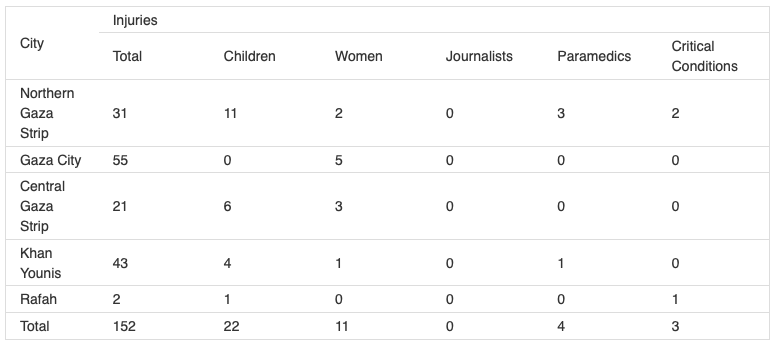














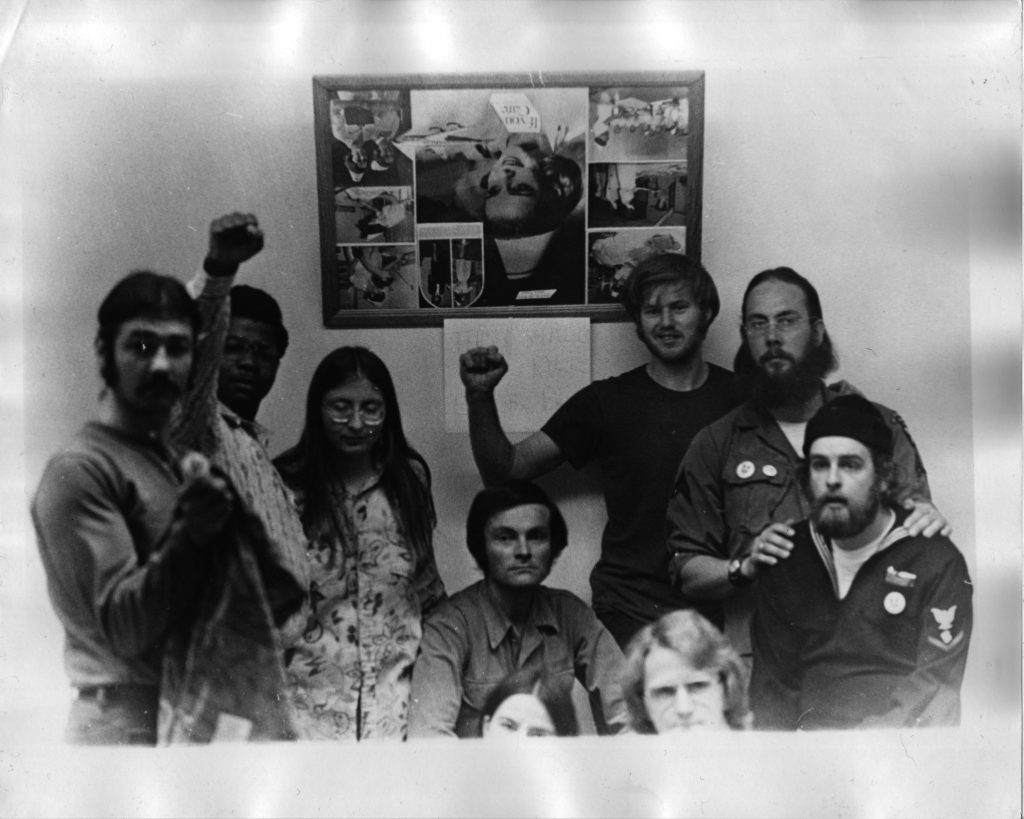
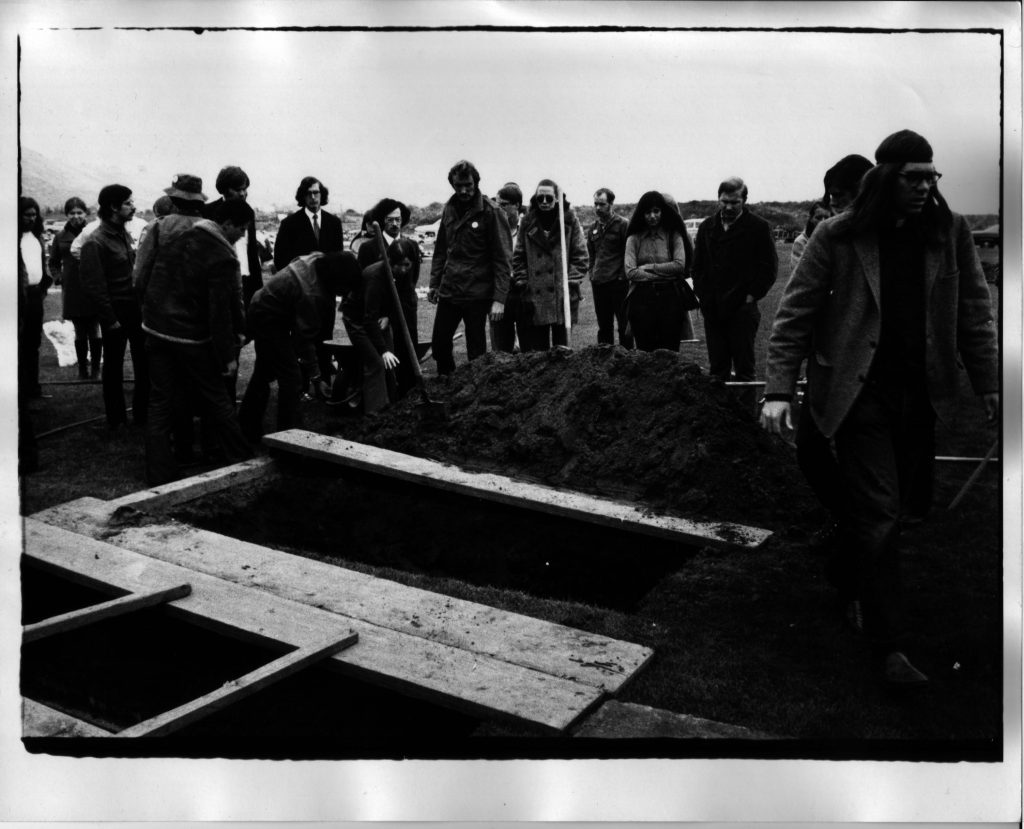
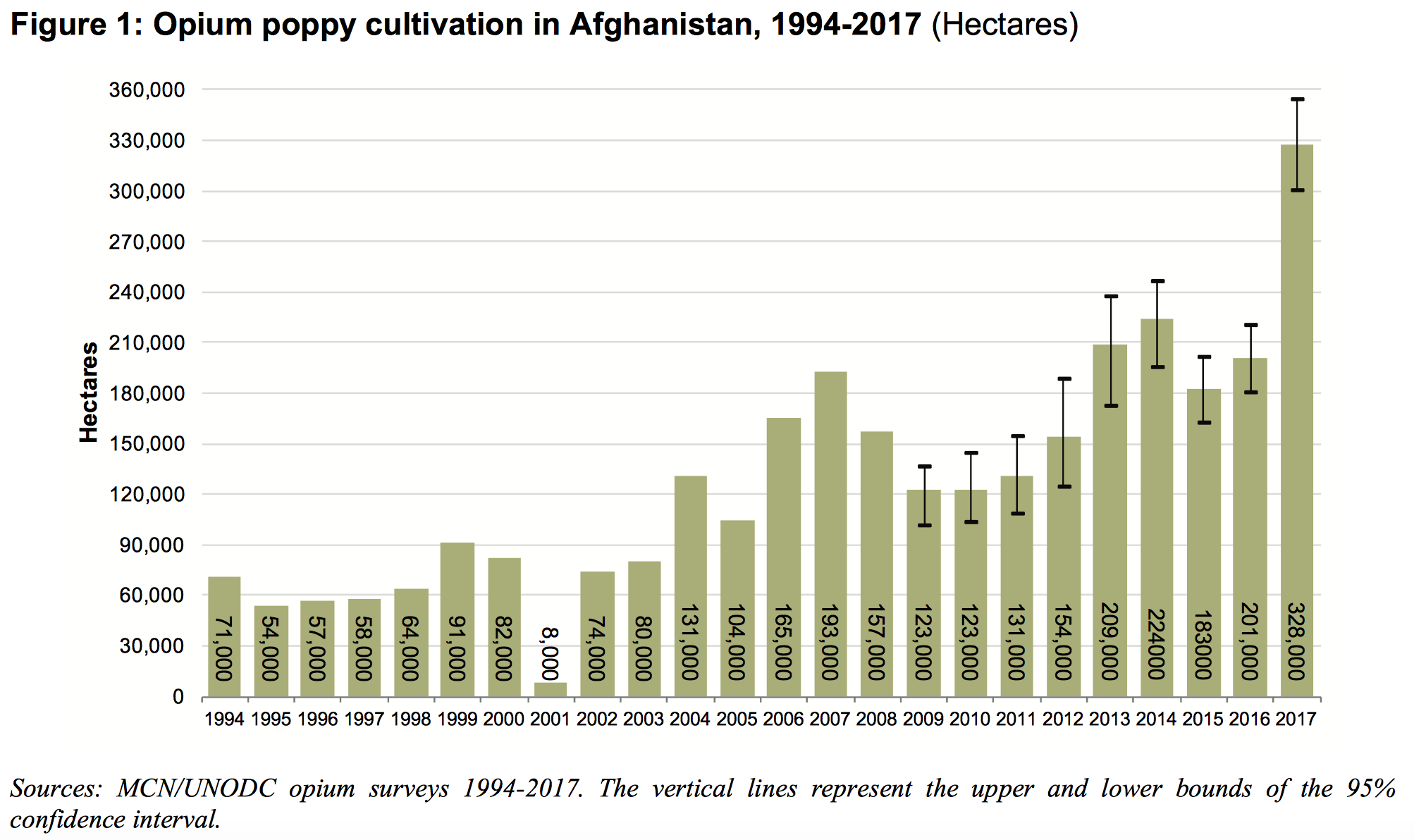
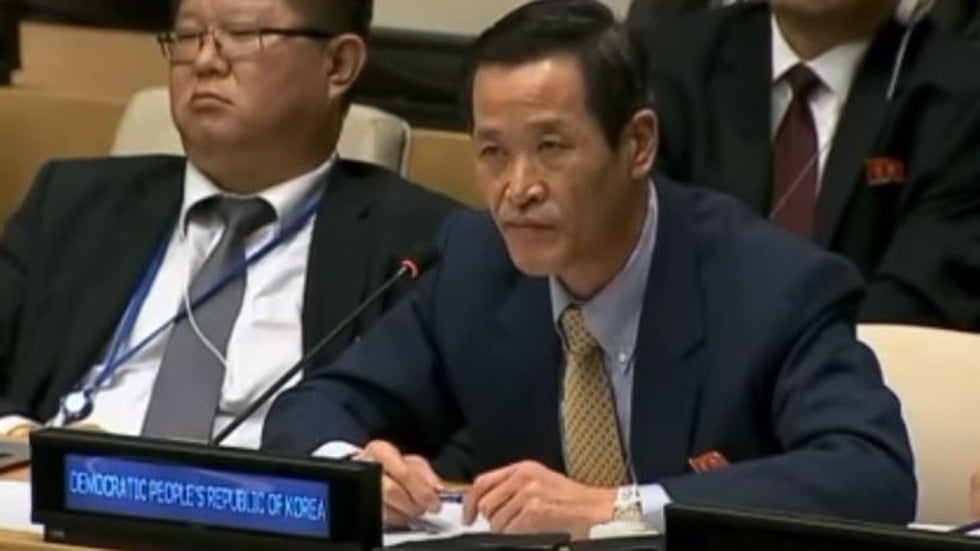
 Can you
Can you 












































